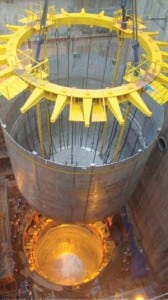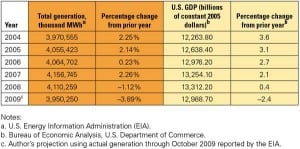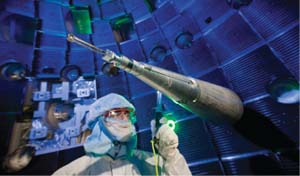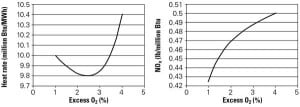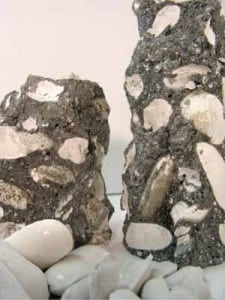-
Nuclear
U.S. Spins Nuclear Wheels as Other Nations Roll Out New Plants
President Barack Obama’s January State of the Union speech called for incentives to make clean energy profitable — mainly through the construction of a new generation of nuclear power plants. That comment, an apparent effort to reach out to Republican members of Congress, drew furious applause. Within three weeks, the president’s backing of nuclear power had already made a significant impact on the U.S. nuclear sector.
-
Nuclear
Benchmarking Nuclear Plant Staffing
The EUCG Nuclear Committee has collected benchmarking data of U.S. nuclear plant staffing for many years. A summary of this highly desirable data was gleaned from EUCG databases and is now, for the first time, made public through an exclusive agreement with POWER.
-
Nuclear
Initial Experiments Meet Requirements for Fusion Ignition
Scientists at Lawrence Livermore National Laboratory’s National Ignition Facility (NIF) in California speculate that a prototype nuclear fusion power plant could be operational within a decade, thanks to a test of the world’s largest laser array that confirmed a technique called inertial fusion ignition is feasible. Their first experiments have demonstrated a unique physics effect that bodes well for NIF’s success in generating a self-sustaining nuclear fusion reaction. Fusion energy is what powers the sun and stars.
-
O&M
A Primer on Optimizing Fleet Operations
The power industry needs a straightforward definition of "fleet optimization" and a game plan to achieve the promised economic gains of optimizing. This need has become more urgent because integrating nondispatchable renewable resources requires more complex optimization strategies. The bottom-up approach presented here applies well-understood optimization principles and techniques that will help power producers minimize their fleetwide cost of production, independent of the technologies used to generate electricity.
-
Coal
From GHG to Useful Materials
Could the transformation of carbon dioxide (CO2) into carbonates and oxides solve the problem of greenhouse gas emissions (GHG) from fossil-fired power plants? Some companies are betting that such processes could make everyone happy and even create new profits. Buzz has been growing about this approach, though the concept has been around for many years.
-
General
Greenpeace Flies Under the Cloud
By Kennedy Maize Washington, April 2, 2010 — Greenpeace doesn’t like cloud computing. The out-on-the-edge environmental group also doesn’t much care for Apple’s upcoming IPad computer platform, which adds to the data content of the cloud. Why is this? Because the data cloud, and its associated applications such as the IPad, dwell on server islands […]
-
News
Vietnam Signs Energy Agreement with U.S.
Vietnam and the United States have signed an agreement that will allow U.S. companies to work in Vietnam to develop atomic power for energy.
-
News
EPA Formally Announces Phase-in of Clean Air Act Permitting for GHGs
Under a final decision issued Monday by the U.S. Environmental Protection Agency (EPA), no stationary sources, including power plants, will be required to get Clean Air Act permits that cover greenhouse gases (GHGs) before January 2011.
-
News
China Leads G-20 in Clean Energy Finance and Investment
For the first time, China led the U.S. and other G-20 members in 2009 clean energy investments and finance, according to data released Thursday by The Pew Charitable Trusts. Last year, China invested $34.6 billion in the clean energy economy—nearly double the U.S. total of $18.6 billion. Over the past five years, the U.S. also […]
-
News
Calif. Peaker to Go Combined Cycle, Perhaps with a Side of Solar
The California Energy Commission has approved converting a San Joaquin County peaker plant to a combined-cycle plant. The 169-MW Tracy Peaker Plant would become the 314-MW Tracy Combined Cycle Power Plant. The decision last Wednesday was seen as opening the possibility of integrating solar photovoltaic (PV) power generation—to be built on city land—with the plant, […]
Search


